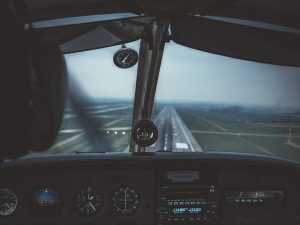
Flight recorders play an important role in aviation safety. Also known colloquially as “black boxes,” they store data about the airplane with which they are used. If an accident occurs, investigators can analyze the airplane’s black box to determine what happened. While you might be familiar with their purpose, however, there are probably other things about black boxes that you don’t know.
#1) Not Really Black
Black boxes aren’t really black; most of them are orange. In the past, black boxes were designed with a black color, but investigators complained that they were difficult to spot. This led to the advent of orange-colored black boxes, which has since become the universal design for these devices. With their orange color, modern black boxes are easier to spot.
#2) Originally Used Magnetic Tape
Black boxes have changed over the years. In addition to featuring a black color, some of the first black boxes also used magnetic tape to store data. Magnetic tape black boxes were invented in the early 1960s, and they were used for several decades before being replaced with digital, solid-state black boxes.
#3) FDR and CDR
There are two components to modern black boxes: the flight data recorder (FDR) and the cockpit voice recorder (CVR). The FDR automatically records data about the airplane and the flight. The CVR automatically records sound from inside the cockpit. If there’s a problem, for instance, the pilot or copilot can talk about it so that the problem is recorded in the black box’s CVR.
#4) Incredibly Strong
To say that black boxes are strong would be an understatement. They are designed to withstand crashes, so they feature a rugged and durable construction. Black boxes, in fact, can even withstand up to 2,000 degrees Fahrenheit heat. Even if a fire occurs, the airplane’s black box will likely remain intact while subsequently preserving the valuable data in its FDR and CVR.
#5) Required Internationally
International regulations require all airplanes to carry a black box. The International Civil Aviation Organization oversees the use of black boxes. It sets the guidelines and specifications for these devices.
#6) Found in the Rear of the Fuselage
Where are black boxes located exactly? While the CVR records sound from inside the cockpit, both the CVR and the FDR are located in the rear of the fuselage. This helps to ensure the black box will remain intact in the event of an accident.



